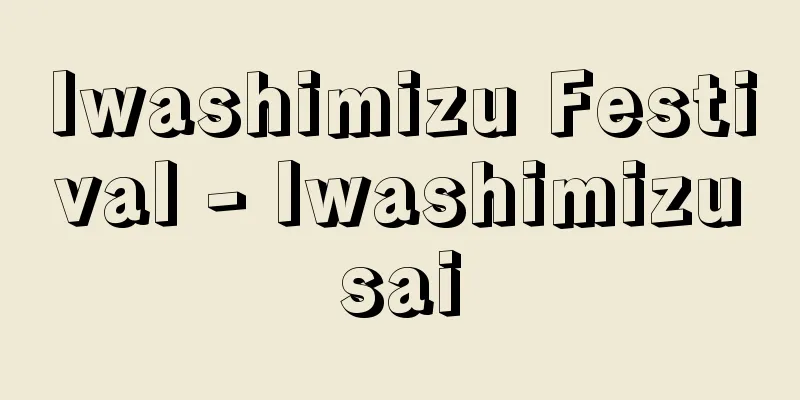Hideyo Arisaka

|
Japanese linguist. Born in Kure, Hiroshima Prefecture, on September 5, 1908. Moved to Tokyo in 1911 (Meiji 44). His father, Shozo (1868-1941), was a doctor of engineering. Graduated from the Department of Linguistics at Tokyo Imperial University in 1931 (Showa 6). He studied phonetics on his own from middle school, and at the end of his fourth year at First High School, he wrote "Research on the History of Words," which was printed posthumously. He was a precocious genius, but was in poor health, and spent most of his life struggling with illness. He studied linguistics and learned about ancient kana usage, and published about 50 papers in the 10 years after graduation. He left behind many outstanding achievements in the fields of general phonology and the phonological history of Japanese language, with his clear logic and precise analysis. His original views, such as the fact that there are two types of kana for "mo" in the Kojiki, that a kind of vowel harmony phenomenon is observed in ancient Japanese, and that there is a pattern to the vowel alternation, such as ame for amagasa (umbrella) and ki for kokage (shade), have become accepted academic theories, and his observations on vowel harmony are a strong argument for the northern origin theory of the Japanese language. In general phonology, he established his own theory that phonology is the speaker's objective concept, and he also summarized his observations on phonological systems and phonological changes in his Phonology, for which he received a doctorate in literature. In 1943 (Showa 18), he published A Study on the Phonological History of the Japanese Language, a collection of essays centered on the phonological history of Japanese and Chinese, and in 1952 he was awarded the Japan Academy Prize. He also had a deep knowledge of the sounds of ancient Chinese characters, some of which can be seen in his posthumous work on phonology in the Nara period, "Kyodai Onun Kou." He passed away on March 13, 1952. [Takuya Okimori October 19, 2018] "Japanese Language Studies, Vol. 10 (1952)" edited and published by the Japanese Language Society [Reference items] | |Source: Shogakukan Encyclopedia Nipponica About Encyclopedia Nipponica Information | Legend |
|
国語学者。明治41年9月5日、広島県呉(くれ)市に生まれる。1911年(明治44)東京に移住。父紹蔵(しょうぞう)(1868―1941)は工学博士。1931年(昭和6)東京帝国大学言語学科卒業。中学時代から独学で音声学を学び、第一高等学校4年修了時にノート4冊に記した『語勢沿革研究』は没後活字化された。早熟な秀才であったが、病弱で、半生のほとんどは闘病生活であった。言語学科に進学して上代特殊仮名づかいを知り、卒業後10年余りの間に約50編の論文を発表。一般音韻論、国語音韻史の分野に、透徹した論理と精緻(せいち)を窮めた考察で、多くの優れた業績を残した。『古事記』の「モ」の仮名づかいに2類の区別があること、古代日本語には一種の母音調和の現象がみられること、アマガサ(雨傘)に対するアメ、コカゲ(木陰)に対するキのような母音交替に法則性があることなど、独創的な見解はそのまま学界の定説となり、母音調和に関する指摘は日本語系統論の北方系説の有力な論拠となっている。一般音韻論では、音韻を話し手の目的観念であるとする独自の理論をたて、音韻体系、音韻変化に関する考察をも『音韻論』にまとめ文学博士号を受けた。1943年(昭和18)国語および中国語の音韻史を中心テーマとする論文集『国語音韻史の研究』を出版し、1952年日本学士院賞を受賞した。また、中国古代漢字音にも造詣(ぞうけい)が深く、奈良時代の音韻研究に関する遺著『上代音韻攷(こう)』にその一端がうかがえる。昭和27年3月13日没。 [沖森卓也 2018年10月19日] 『日本語学会編・刊『国語学』10集(1952)』 [参照項目] | |出典 小学館 日本大百科全書(ニッポニカ)日本大百科全書(ニッポニカ)について 情報 | 凡例 |
<<: Conopophagidae; gnateaters
>>: Arisaka Narakira - Arisaka Narakira
Recommend
Kim Dae-jung
South Korean politician and 15th president. Born ...
Campbell sunshine meter - Campbell sunshine meter
...An instrument for recording the hours of sunsh...
kôe-chap (English spelling) koechap
…It is also written as catchup or catsup. It seem...
Analytical Function Theory
...It expresses a deep faith in the idea that eve...
Arsenous acid (arsenic acid)
An acid thought to exist when diarsenic trioxide A...
Battle of Austerlitz - Battle of Austerlitz
A battle in December 1805 at Austerlitz, in which ...
Atlantic Ocean
It borders the European and African continents to...
Alkylation - Arukiruuka (English spelling) alkylation
It usually refers to a reaction in which an alkyl...
Julian year - Julian year (English spelling)
The length of a year in the Julian calendar, i.e. ...
Self-excited oscillation
Vibration that is excited, grows, and continues in...
Progesterone
Pregn-4-ene-3,20-dione. C 21 H 30 O 2 (314.46). O...
Armadillidium vulgare
A species of the Isopoda crustacean family Armadil...
Caravan Shoes
…Until around 1955, studded shoes (nagels) were c...
NCR Corp.
...It is a PR activity, and is more limited than ...
Inselberg
…As the pediment expands, the mountain range shri...









